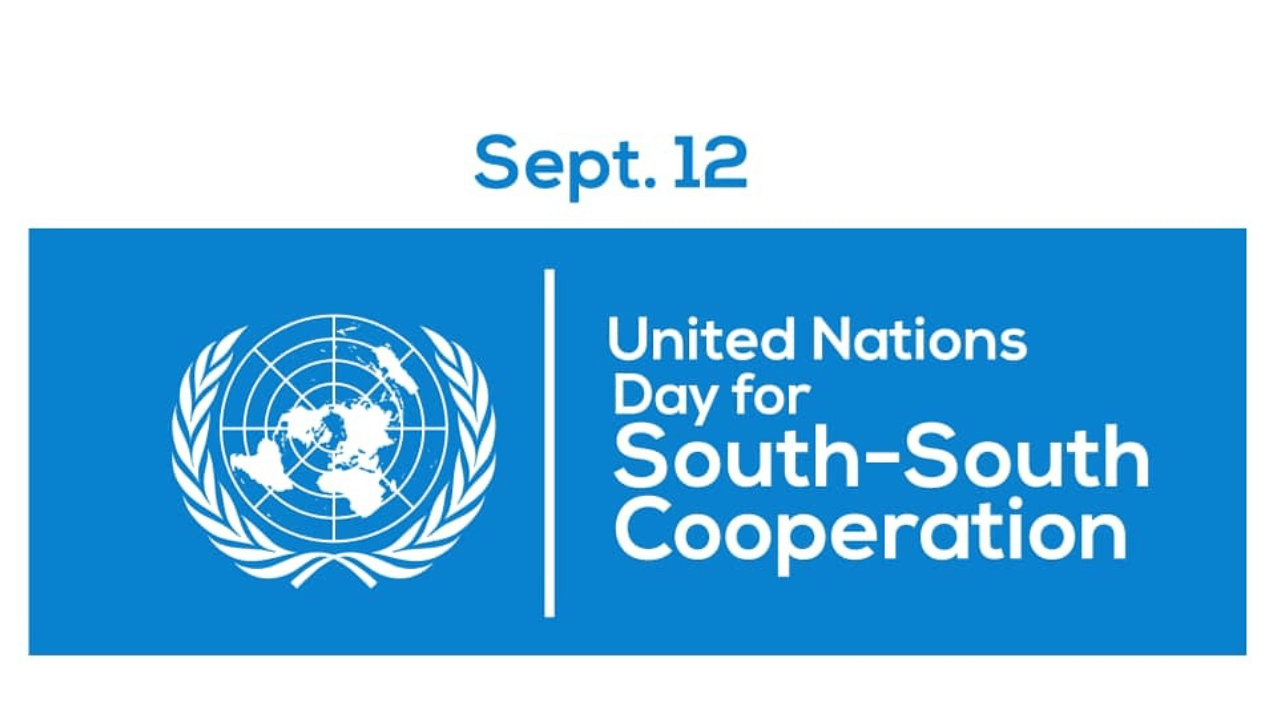International Day for South-South Cooperation 2024
The International Day for South-South Cooperation is celebrated annually on September 12. It was established by the United Nations General Assembly in 2014 to promote and raise awareness of South-South cooperation.
International Day for South-South Cooperation Theme 2024
The official theme for the International Day for South-South Cooperation 2024 is “A Better Tomorrow with South-South Cooperation”.
It is an opportunity to go deeper across regions and capture how South-South cooperation has evolved and helped achieve regional as well as global goals and aspirations, with the view of helping chart pathways to a more inclusive and sustainable future.
The theme for 2023 was “Solidarity, Equity, and Partnership: Unlocking South-South Cooperation to Achieve the SDGs”.
What does South-South Cooperation mean exactly?
- South-South cooperation is a form of international cooperation between developing countries.
- It is based on the principle of solidarity and mutual benefit. South-South cooperation can take many forms, including technical assistance, financial assistance, and capacity building.
- South-South cooperation is different from North-South cooperation, which is a form of international cooperation between developed and developing countries.
- North-South cooperation is often characterized by a donor-recipient relationship, while South-South cooperation is more often characterized by a partnership between equals.
The rationale for South-South cooperation is that developing countries can learn from each other’s experiences and share resources more effectively than they can with developed countries. This is because developing countries often face similar challenges and have similar needs.
Objectives of South-South Cooperation
- Enhance the creative capabilities of developing nations and bolster their technological capacity to devise solutions for their development challenges.
- Facilitate the formulation of necessary strategies to tackle these issues effectively.
- Foster and reinforce collective self-reliance among developing countries by facilitating the exchange of experiences, which in turn raises awareness of shared challenges and broadens access to available knowledge resources.
- Acknowledge and address the specific issues and needs of the least developed countries, landlocked developing nations, small island developing states, and countries most severely impacted by natural disasters and other crises.
- Facilitate their increased participation in international economic activities.
History of International Day for South-South Cooperation
The history of South-South cooperation within the United Nations spans several key milestones:
- 1949: The first UN technical aid program was established by the Economic and Social Council.
- 1965: Creation of the United Nations Development Programme (UNDP) to further the commitment to development assistance.
- 1974: The United Nations General Assembly endorsed the establishment of a special unit within UNDP to promote technical cooperation among developing countries, tasked with coordinating South-South and triangular cooperation globally and within the UN system.
- 1978: The Global South held a conference on Technical Cooperation among Developing Countries (TCDC) in Buenos Aires, leading to the adoption of the Buenos Aires Plan of Action (BAPA). This plan became one of the main pillars for South-South cooperation and strengthened the Special Unit’s role in fulfilling its mandate outlined in BAPA.
- 2013: The Special Unit was officially renamed to the United Nations Office for South-South Cooperation (UNOSSC).
- 2009: The High-level UN Conference on South-South Cooperation in Nairobi, Kenya, resulted in the Nairobi outcome document. This document emphasized the roles of national governments, regional entities, and UN agencies in supporting and implementing South-South and triangular cooperation.
- 2015: The adoption of the 2030 Agenda for Sustainable Development marked a significant moment.
- 2019: The General Assembly convened the second high-level United Nations conference on South-South cooperation (BAPA+40) on the fortieth anniversary of the adoption of the Buenos Aires Plan of Action. During this event, world leaders adopted an outcome document emphasizing the need for even greater South-South cooperation to achieve sustainable development.
These milestones demonstrate the UN’s commitment to promoting cooperation among developing countries as a means to address common challenges and advance sustainable development goals.
Significance of International Day for South-South Cooperation
- It can help to reduce poverty and inequality.
- It can help to promote sustainable development.
- It can help to build peace and security.
- It can help to strengthen human rights and democracy.
- It can help to promote cultural understanding and cooperation.
South-South cooperation is a valuable tool for development. It can help developing countries to achieve their goals and to build a better future for their people.
The inclusion of the African Union (AU) in G20 in the G20 summit in New Delhi last year under India’s presidency shows the importance these countries now hold in global affairs and geopolitics.
12th September 2024 Special Day
On September 12, 2024, we commemorate the International Day for South-South Cooperation, established by the United Nations General Assembly in 2014. This annual celebration emphasizes the significance of collaboration among nations in the Global South. Let’s reflect on the shared goals, mutual support, and collective efforts that characterize South-South cooperation. By promoting understanding and collaboration, we contribute to the advancement of sustainable development, fostering a world where nations work together for the benefit of all.
- Weekly Current Affairs 2025 PDF For Bank, SSC, UPSC Exams
- Unsung Heroes of India: 10 Unknown Freedom Fighters You Should Know
- 26 December Current Affairs 2023 in English
- Daily Current Affairs 2025, Check Today’s Current Affairs
- April Month Current Affairs 2024, Download PDF
- June Month Current Affairs 2024, Download PDF

Hello, I’m Aditi, the creative mind behind the words at Oliveboard. As a content writer specializing in state-level exams, my mission is to unravel the complexities of exam information, ensuring aspiring candidates find clarity and confidence. Having walked the path of an aspirant myself, I bring a unique perspective to my work, crafting accessible content on Exam Notifications, Admit Cards, and Results.
At Oliveboard, I play a crucial role in empowering candidates throughout their exam journey. My dedication lies in making the seemingly daunting process not only understandable but also rewarding. Join me as I break down barriers in exam preparation, providing timely insights and valuable resources. Let’s navigate the path to success together, one well-informed step at a time.






